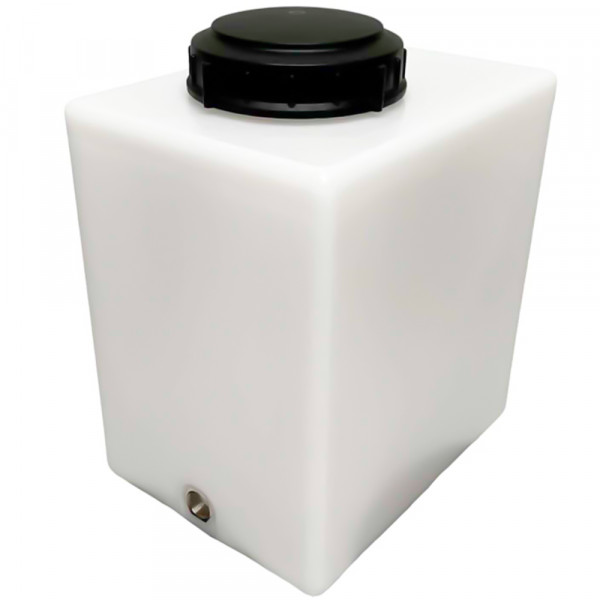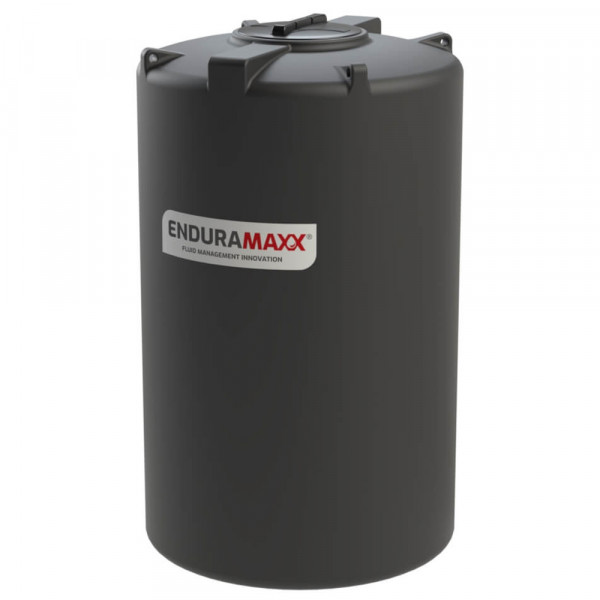If you intend to store drinking water, you may have come across the term potable water. But, what is potable water and is it safe for drinking?
In this guide, we'll be taking a closer look at what potable water is and how it differs from non-potable water. We'll also provide you with some tips and advice on how to safely store drinking water including information on the relevant laws and regulations which surround it.
- What is potable water?
- What is non-potable water?
- What is the difference between potable water and pure water?
- Potable water regulations
- Recommendations for storing potable water
- The most common causes of contamination
- How to tell your potable water is contaminated
What is potable water?
Potable water, also known as drinking water, is water that is safe for human consumption. It usually comes from surface water and groundwater sources then it is treated to make it safe for consumption.
Potable water includes tap water, bottled water, filtered water, and any other water considered safe for drinking and food preparation.
What is non-potable water?
Non-potable water is water that hasn't been treated according to the drinking water standards. Therefore it is not safe for human consumption.
Untreated water from reservoirs is an example of non-potable water. This type of water is commonly used for irrigation, energy production and supplying water to lakes. However, it should not be used for drinking or in food preparation due to the risk of impurities and contaminants.
What is the difference between potable water and pure water?
Pure water, also known as purified water, distilled water or deionised water, is water that is free from any impurities such as calcium, magnesium, sodium, potassium and phosphorus. These impurities are removed through carbon filtration, microporous filtration and ultraviolet oxidation to leave pure H2O.
Potable water on the other hand contains these minerals which are perfectly safe to drink but are not ideal for all applications. Those in the manufacturing, pharmaceutical, chemical and energy industries may prefer to use pure water as it has the right composition for its intended use.
What makes water unsuitable for drinking?
There are many reasons why some water is not suitable for drinking. For example, biological contaminants, chemical contaminants and physical impurities like dust, clay and sand. Therefore, you must appropriately store potable water using a specialised potable water tank to ensure that these impurities and contaminants do not infect the water supply.
Potable water regulations
The Water Supply (Water Fittings) Regulations and Water Supply (Water Fittings) (Scotland) Byelaws lay out the legal requirements which cover the design, installation, operation and maintenance of water storage tanks. These regulations cover the point of entrance of the water which is usually from the stop tap through to the water fittings and storage tanks on the premises. However, these rules only apply to premises that have a supply of water from a water company. They do not apply to properties which use a private water supply.
The The Water Supply (Water Quality) Regulations 2016 also lay out the required standards for drinking water which sets out the minimum and maximum range of impurities allowed in drinking water which includes:
- Micro-organisms
- Chemicals such as nitrate and pesticides
- Metals such as lead and copper
- The way the water looks and how it tastes
The Private Water Supplies Regulations 2016 and The Private Water Supplies (Amendment) Regulations 2018 lay out the regulatory framework which covers private water supplies. For example, suppose you supply water to domestic or commercial premises using water collected from wells, boreholes, springs, rivers or streams, lakes or ponds. In that case, it is your responsibility to register the private water supply with the local authority to organise regular risk assessments and tests to ensure the water is safe and does not pose a risk to human health.
Recommendations for storing potable water
There are many reasons why you may choose to store potable water for both domestic and commercial purposes. However, to make sure the water remains drinkable, there are certain steps you should take.
Only use approved potable water tanks and containers
When browsing for water tanks, they should state whether they are for potable or non-potable use. In the UK, potable water tanks should be approved under the Water Regulations Approval Scheme (WRAS) which means it is registered as safe for storing water intended for human consumption.
In addition to it being WRAS-approved, the tank should also be made from UV-resistant food-grade plastic.


At Kingfisher Direct we stock a selection of WRAS-approved potable water tanks available in sizes ranging from 25 litres to 30,000 litres.
Choose the right size water tank for your needs
When it comes to drinking water, one of the most important considerations you must take into account is not allowing the water to become stagnant.
Choosing an adequate-sized water tank that meets your needs means that the water will constantly be replenished in the tank. If your tank is too big, then there is more risk of your water becoming stagnant as it is not moving about or being replenished. This can lead to harmful growth of bacteria and other contaminants within the tank which can cause significant health risks to those that drink it.
We offer a range of potable water tanks from small-capacity water tanks such as our 88 Litre Tower Water Tank to large industrial water tanks such as the Enduramaxx 7000 Litre Vertical Potable Water Tank.
Clean water tanks and containers thoroughly before use
To reduce any risks of cross-contamination, you should only use clean and fully functioning containers. To clean your water storage, you should wash them with soap and water, rinsing them well. To ensure that the water tank has been thoroughly disinfected, you should then disinfect it using a ratio of 4:1 hot water to bleach.
Store the tank correctly
Once your water has been placed in the tank, it should be stored in a cool, dark place away from direct sunlight and heat sources. Over time, sunlight and heat can break down the plastic container, causing chemicals from the plastic to leach into the water. If the water sits between 20°C and 40°C for too long, you increase the risk of Legionella building up in your potable water tank which can have serious health consequences.
You should also avoid storing the water in an area where it may likely freeze. The freezing process could cause the tank to crack and lose its integrity which may lead to cross-contamination or leaks in the future.
Similarly, you should also avoid storing the water in rooms where petrol, pesticides and other chemicals are stored. This is because vapour from the chemicals can penetrate through the plastic, spoiling its contents.
Our smaller capacity water tanks such as the Flat 250 Litres Baffled Water Tank have been designed to help you maximise your storage space whilst also allowing you to store your potable water safely. Alternatively, our Tower 250 Litre Baffled Water Tank can help you maximise floor space if your storage facilities are limited.
Replenish the water, inspect the tank and clean it regularly
One of the best ways to make sure your potable water remains safe enough to drink is by carrying out regular checks and maintenance on the water and the tank.
Generally speaking, it is recommended that you replenish the water every 6 months. However, doing this more frequently will ensure your water stays safe and tastes fresher.
You should also carry around regular inspections on the tank and equipment. It is recommended you do this annually, although more frequent checks are advisable. Our potable water tanks are available in a semi-translucent finish which makes them ideal for checking the water level in your tank but also inspecting it for contaminants and other debris.
How long can you store water in a tank?
This is dependent on the conditions water is stored. If you don’t store your water properly, it won’t stay safe to drink for long.
To store water properly you need to follow three simple steps:
- Ensure the storage tank is clean before filling
- Tightly seal the container to keep chemicals and light out, using a cover for the water storage will help
- Store in a dark and cool location
You also need to make sure water is constantly moving to avoid any possibility of it going stagnant. The best way to do this is by choosing a water tank that is the correct size for your needs. By doing this you ensure that there is constant movement in the tank, and it isn’t standing for too long.
The most common causes of contamination
Bacteria or algae
Bacteria or algae growth can be easy to spot. If your water storage is green, has a funny smell or has stuff floating in it, your water is contaminated.
It is important to store water in a storage tank that is water storage safe. If you use a container that isn’t supposed to store water, the materials of the tank could cause the water to be contaminated quickly.
Incorrectly accessing the water storage tank
When you access the storage tank, you need to be careful that you don’t contaminate the water yourself. You can contaminate water by putting your hands in the tank or by putting an object in that has potential bacteria on it already. Therefore you should always ensure that you follow correct hand washing and sterilisation procedures before attempting to access the tank.
Damaged or inadequate water storage tanks
If you are using a water tank which hasn't been constructed to store potable water then you put your water at risk of contamination. Potable water tanks should be made from a rust-proof, WRAS-approved material and feature a smooth interior and tight-fitting lid to safeguard your water against any potential contaminants and bacterial growth.
All our potable water tanks come with tight-fitting lids as standard. There is also the option to add outlets with tap kits which allow you to safely decanter the contents when required reducing the risk of cross contamination.
How to tell your potable water is contaminated
It is important to regularly check your water storage tank to make sure the potable water is still safe to use.
There are a few things you can check for each time you inspect your storage tank:
- Has a strange smell
- The water is murky
- Developed a strange colour
- Green algae
Safe drinking water should be clear, tasteless, odourless and free from any visible (and non-visible) contaminants. The key thing to remember is to keep on top of your water storage and check it regularly as this will help you spot anything untoward.
Browse our range of WRAS-approved potable water tanks
As one of the UK's leading water storage tank suppliers, we stock a range of WRAS-approved potable water tanks designed for every application. Whether you require a compact, transportable tank or an industrial-scale potable water tank, we have the product for you.
For further information on our range of potable water tanks, please contact our sales team on 01777 858009 or email sales@kingfisherdirect.co.uk.
